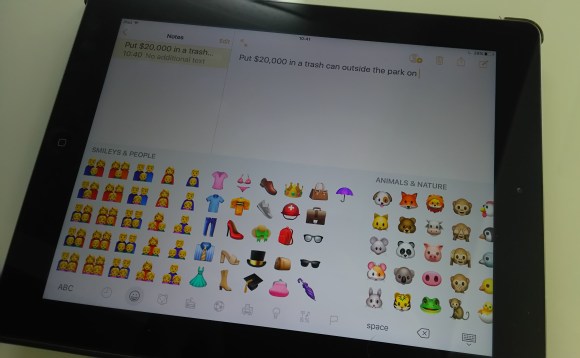
Common sense might lead you to believe that “emoji” is simply a variation of “emoticon,” but Japanese common sense tells a whole different story.
We all know emoji as those convenient little pictures that punctuate our tweets and emails letting people know when we’re being sarcastic or facetious. They’re a slicker, modern version of those crude emoticons constructed from preexisting keyboard characters like ;) to express happiness or >8[ to symbolize a grumpy puppet… or something. I don’t know.
The similarities between emoticons and emoji would certainly suggest the names are simply variations of one another. As we all know “emoticon” is just a portmanteau of “emotion” and “icon.” So with emoji being an invention of Shigetaka Kurita working with NTT DoCoMo we could assume that “emoji” is a similar portmanteau of “emotion” and the Japanese word for written character “ji” (字).
The way “ji” works is as a suffix with the opening part explaining what type of character it is. For example, “kan” which refers to China and “ji” make “kanji” or “Chinese characters” and “su” meaning “count” and “ji” make “suji” meaning “number.” So it’s not a stretch to assume “emoji” follows the same logic but with a slight English twist.
However, one more example would be “moji” which simply means “word.” Now, if we slap on the Japanese word for picture, “e” (pronounced “eh”), we get “emoji” or “picture word.”
▼ “E” (picture) + “moji” (word) = “emoji” (picture word)
Although common knowledge in Japan, this open secret caused a bit of a stir when posted on the Today I Learned page of Reddit leading to comments such as:
“If this is the case then everyone mispronounces it. It would be “eh” Moji, not “ee” Moji.”
“I thought it was emo(tion) + ji (letter)”
“And I did not know that! Thanks.”
“Etymology sure is an emojional rollercoaster!”
“Huh, an instance of ‘found in translation.'”
“Dafuq! I didn’t know!”
Some also figured that rather than a pure coincidence, there was an intentional effort to make the word similar to “emoticon.” It’s possible, but emoticons weren’t used in Japan very much. Instead, kaomoji (顔文字) — where “kao” means “face,” hence “face words” — were the preferred digital smileys.
▼ Kaomoji tend to be more detailed and less ambiguous than older emoticons such as this one that means “my eyeball just fell out and exploded.”
If you would like to learn more about the fun of kaomoji and beyond, check out our tutorial on some Japanese IME functions.
As for the true meaning of “emoji,” the lack of “emotion” being a part of it makes perfect sense, considering facial expressions only make up a fraction of the entire emoji catalog. Unless “post office” and “tractor” are simply feelings I haven’t gotten in touch with yet.
Source: Reddit
Images: ©SoraNews24

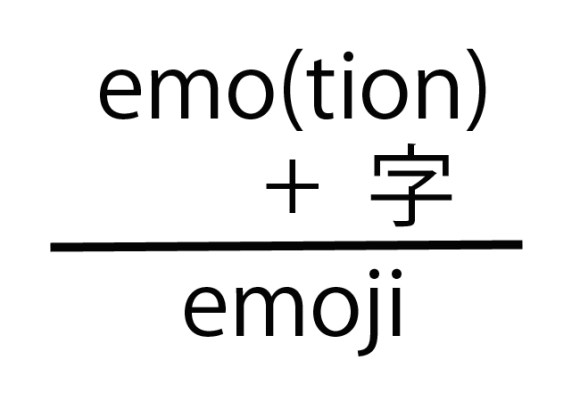
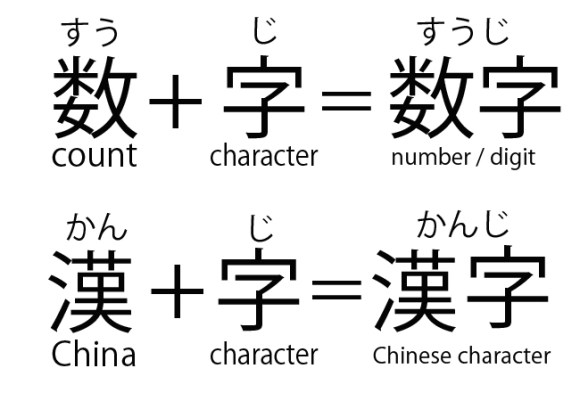
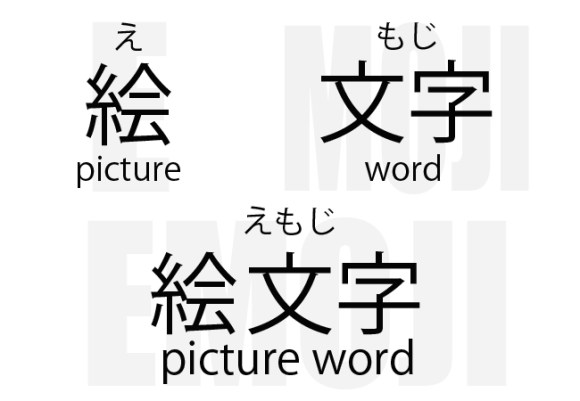
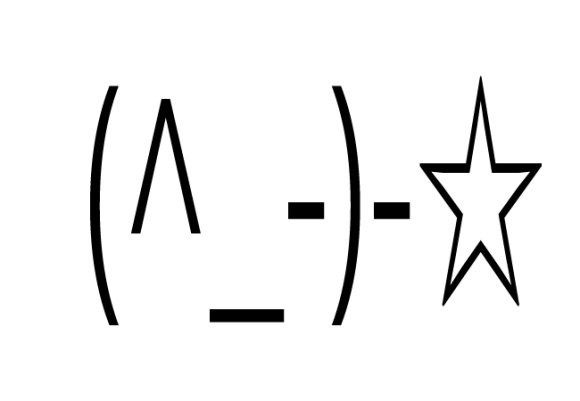
 Japan Self-Defense Forces Twitter account issues apology for cute emoticon salute
Japan Self-Defense Forces Twitter account issues apology for cute emoticon salute Japan’s 10 favorite emoji for Twitter, and how they compare to the rest of the world
Japan’s 10 favorite emoji for Twitter, and how they compare to the rest of the world Keyboard app shares most common emoji by country, Japan’s are completely different from others
Keyboard app shares most common emoji by country, Japan’s are completely different from others The emoji you send actually say a lot about you
The emoji you send actually say a lot about you Foreigner’s request for help in Tokyo makes us sad for the state of society
Foreigner’s request for help in Tokyo makes us sad for the state of society Bad tourist manners at Mt Fuji Lawson photo spot prompts Japanese town to block view with screens
Bad tourist manners at Mt Fuji Lawson photo spot prompts Japanese town to block view with screens FUK COFFEE?!? Japanese cafe has a perfectly innocent reason for its startling-looking name
FUK COFFEE?!? Japanese cafe has a perfectly innocent reason for its startling-looking name McDonald’s Japan’s new pancake pie is a taste sensation
McDonald’s Japan’s new pancake pie is a taste sensation Studio Ghibli unveils massive T-shirt collection featuring top anime movie characters
Studio Ghibli unveils massive T-shirt collection featuring top anime movie characters One of Japan’s oldest castles now lets travelers spend night on the grounds, drink in its keep
One of Japan’s oldest castles now lets travelers spend night on the grounds, drink in its keep Japanese ramen restaurants under pressure from new yen banknotes
Japanese ramen restaurants under pressure from new yen banknotes Mikado Coffee is a 76-year-old coffee chain with a major celebrity connection
Mikado Coffee is a 76-year-old coffee chain with a major celebrity connection Who wins in a battle of McDonald’s and Komeda Coffee’s chicken tatsuta burgers?【Taste test】
Who wins in a battle of McDonald’s and Komeda Coffee’s chicken tatsuta burgers?【Taste test】 Japanese-style accommodation at the new Premium Dormy Inn hotel in Asakusa will blow your mind
Japanese-style accommodation at the new Premium Dormy Inn hotel in Asakusa will blow your mind Red light district sushi restaurant in Tokyo shows us just how wrong we were about it
Red light district sushi restaurant in Tokyo shows us just how wrong we were about it McDonald’s new Happy Meals offer up cute and practical Sanrio lifestyle goods
McDonald’s new Happy Meals offer up cute and practical Sanrio lifestyle goods Tokyo Tsukiji fish market site to be redeveloped with 50,000-seat stadium, hotel, shopping center
Tokyo Tsukiji fish market site to be redeveloped with 50,000-seat stadium, hotel, shopping center Japanese city loses residents’ personal data, which was on paper being transported on a windy day
Japanese city loses residents’ personal data, which was on paper being transported on a windy day Beautiful Red and Blue Star luxury trains set to be Japan’s new Hokkaido travel stars
Beautiful Red and Blue Star luxury trains set to be Japan’s new Hokkaido travel stars Ghibli Park now selling “Grilled Frogs” from food cart in Valley of Witches
Ghibli Park now selling “Grilled Frogs” from food cart in Valley of Witches New definition of “Japanese whiskey” goes into effect to prevent fakes from fooling overseas buyers
New definition of “Japanese whiskey” goes into effect to prevent fakes from fooling overseas buyers Our Japanese reporter visits Costco in the U.S., finds super American and very Japanese things
Our Japanese reporter visits Costco in the U.S., finds super American and very Japanese things All-you-can-drink Starbucks and amazing views part of Tokyo’s new 170 meter-high sky lounge
All-you-can-drink Starbucks and amazing views part of Tokyo’s new 170 meter-high sky lounge More foreign tourists than ever before in history visited Japan last month
More foreign tourists than ever before in history visited Japan last month New Pokémon cakes let you eat your way through Pikachu and all the Eevee evolutions
New Pokémon cakes let you eat your way through Pikachu and all the Eevee evolutions Disney princesses get official manga makeovers for Manga Princess Cafe opening in Tokyo
Disney princesses get official manga makeovers for Manga Princess Cafe opening in Tokyo We try out “Chan Ramen”, an underground type of ramen popular in the ramen community
We try out “Chan Ramen”, an underground type of ramen popular in the ramen community Sales of Japan’s most convenient train ticket/shopping payment cards suspended indefinitely
Sales of Japan’s most convenient train ticket/shopping payment cards suspended indefinitely Sold-out Studio Ghibli desktop humidifiers are back so Totoro can help you through the dry season
Sold-out Studio Ghibli desktop humidifiers are back so Totoro can help you through the dry season Japanese government to make first change to romanization spelling rules since the 1950s
Japanese government to make first change to romanization spelling rules since the 1950s Ghibli founders Toshio Suzuki and Hayao Miyazaki contribute to Japanese whisky Totoro label design
Ghibli founders Toshio Suzuki and Hayao Miyazaki contribute to Japanese whisky Totoro label design Doraemon found buried at sea as scene from 1993 anime becomes real life【Photos】
Doraemon found buried at sea as scene from 1993 anime becomes real life【Photos】 Tokyo’s most famous Starbucks is closed
Tokyo’s most famous Starbucks is closed One Piece characters’ nationalities revealed, but fans have mixed opinions
One Piece characters’ nationalities revealed, but fans have mixed opinions We asked a Uniqlo employee what four things we should buy and their suggestions didn’t disappoint
We asked a Uniqlo employee what four things we should buy and their suggestions didn’t disappoint Japan’s net users are confused and creeped out by Skype’s new “dancing turkey” emoticon
Japan’s net users are confused and creeped out by Skype’s new “dancing turkey” emoticon Geezer group JI-POP is here to promote tourism, steal your grandma’s heart【Video】
Geezer group JI-POP is here to promote tourism, steal your grandma’s heart【Video】 Japanese survey finds top 10 emoji that “make you look like an old man”
Japanese survey finds top 10 emoji that “make you look like an old man” Cardcaptor Sakura gets a special limited-time Twitter emoji to celebrate cherry blossom season
Cardcaptor Sakura gets a special limited-time Twitter emoji to celebrate cherry blossom season Poo emoji hand signals go viral on Japanese Twitter
Poo emoji hand signals go viral on Japanese Twitter Japanese politician apologizes to prime minister for calling wife’s cooking “Hiroshima-yaki”
Japanese politician apologizes to prime minister for calling wife’s cooking “Hiroshima-yaki” Japanese Internet sad to see the word “chikan” becoming commonly used in English
Japanese Internet sad to see the word “chikan” becoming commonly used in English LINE sticker creator Kanahei’s cute characters come to life in theme cafe
LINE sticker creator Kanahei’s cute characters come to life in theme cafe Facebook Cafe opens for a limited time, offers emoji pancakes and drinks for absolutely free
Facebook Cafe opens for a limited time, offers emoji pancakes and drinks for absolutely free What’s the real meaning of Japan’s “burning tofu” emoji?
What’s the real meaning of Japan’s “burning tofu” emoji? Futuristic drinks stand in Tokyo lets you order cute, personalised beverages from your phone
Futuristic drinks stand in Tokyo lets you order cute, personalised beverages from your phone Newest Japanese Twitter craze has users guessing movies using only emoji as hints
Newest Japanese Twitter craze has users guessing movies using only emoji as hints Bacon seems to have fried the brain of one of Japan’s top politicians, judging from crazy tweet
Bacon seems to have fried the brain of one of Japan’s top politicians, judging from crazy tweet Donald Trump meets Pen-Pineapple-Apple-Pen singer Piko Taro in Japan
Donald Trump meets Pen-Pineapple-Apple-Pen singer Piko Taro in Japan Sesame Street Fighter, the most badass children’s TV show ever (if only there were a show for it)
Sesame Street Fighter, the most badass children’s TV show ever (if only there were a show for it) Top April Fools’ Day prank news stories from Japan
Top April Fools’ Day prank news stories from Japan
Leave a Reply